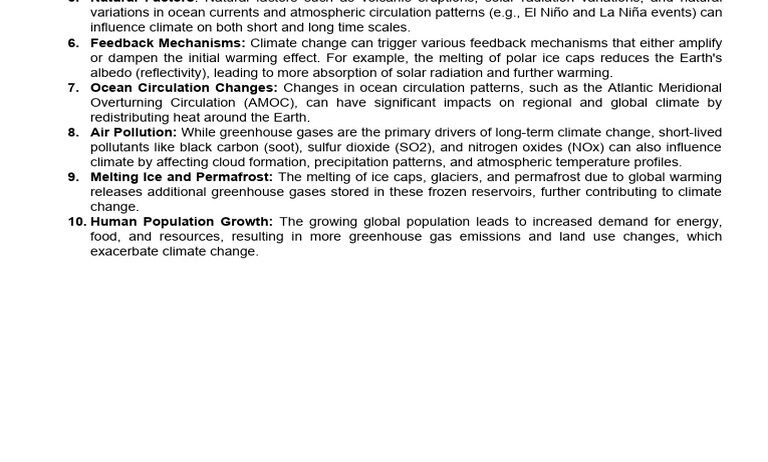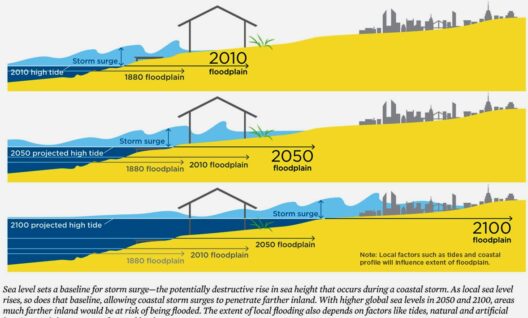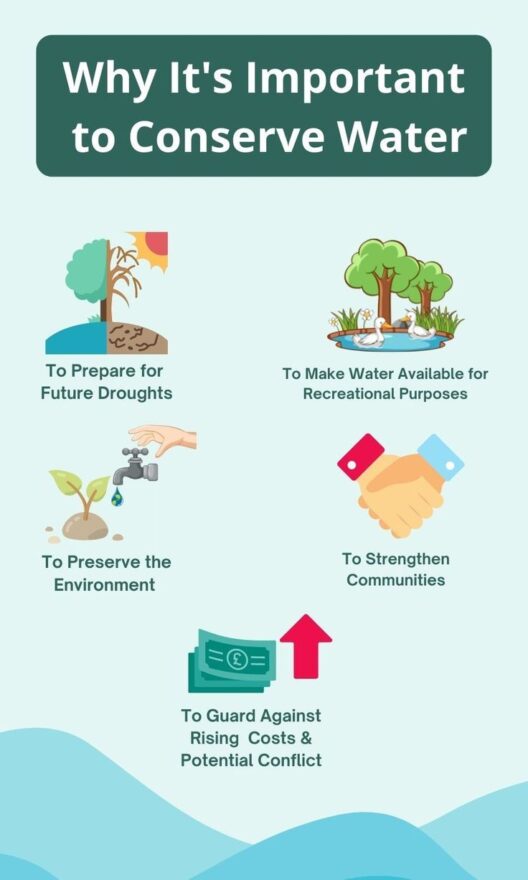Climate change, a paramount challenge of our era, is a multidimensional phenomenon precipitated by an intricate interplay of various factors. Understanding the key elements that directly affect climate change not only fosters greater awareness but also galvanizes action toward sustainable practices. This exploration delves into the environmental, economic, and social dimensions that contribute to this global crisis, unveiling the profound impact of human activity on the planet’s delicate ecosystems.
It is essential first to comprehend the concept of greenhouse gases and their pervasive influence on our climate. The atmosphere serves as a protective barrier, trapping solar energy that keeps the Earth warm. However, anthropogenic emissions of greenhouse gases (GHGs) such as carbon dioxide (CO2), methane (CH4), and nitrous oxide (N2O) have disrupted this delicate balance.
The primary sources of these emissions stem from industrial output, transportation, agriculture, and energy production. Each of these sectors entails distinct characteristics that contribute to the escalating greenhouse effect, exacerbating global warming and its associated impacts. Understanding these sources is crucial for devising effective mitigation strategies.
Let us now delve into the specific sectors and activities that significantly contribute to GHG emissions, elucidating their ramifications on the climate.
Industrialization and Its Carbon Footprint
The industrial sector stands as one of the principal culprits in the surge of GHG emissions, with manufacturing processes often relying on fossil fuels for energy. From the extraction of raw materials to the final production of goods, every stage harbors opportunities for emissions. Industries such as steel, cement, and chemicals are particularly notorious for their carbon footprints.
The aesthetic appeal of parks, urban spaces, and residential areas is often diminished by the presence of smokestacks and pollutants that are synonymous with industrialization. Short-term economic gains achieved through manufacturing often overshadow the long-term environmental repercussions, leading to a vicious cycle that perpetuates climate change.
Transport: The Engines of Emissions
Transportation is another significant contributor to climate change, responsible for nearly a quarter of global emissions. Various modes, ranging from private vehicles to commercial airlines, rely heavily on fossil fuels, releasing CO2 and other harmful pollutants into the atmosphere. The allure of convenience and connectivity must be weighed against the costs to our climate.
As urbanization accelerates, the demand for efficient transport systems grows. However, the expansion of infrastructure often leads to increased emissions if sustainable practices are not adopted. The transition to electric vehicles, public transportation, and cycling infrastructure could mitigate some of the adverse effects, serving both aesthetic and functional purposes within urban settings.
Agriculture: Feeding the Planet, Warming It
Agricultural practices also play a significant role in climate change. Livestock production alone contributes a substantial amount of methane emissions, a gas that is far more potent than CO2 in terms of its warming potential. Moreover, land-use changes for agricultural expansion often involve deforestation, further releasing carbon stored in trees and soil.
The debate surrounding sustainable agriculture is far-reaching, encompassing organic farming, crop rotation, and agroforestry, all aimed at reducing emissions while meeting the nutritional needs of a growing population. The juxtaposition of preserving nature’s aesthetic allure with the need to produce food creates an intriguing challenge for innovation in agricultural practices.
Energy Production: The Battlefield of Fossil Fuels and Renewables
The energy sector is perhaps the most crucial battleground in the fight against climate change. Fossil fuels remain the dominant source of global energy, despite the increasing availability of renewable options like solar, wind, and geothermal. The reliance on coal, oil, and natural gas exacerbates emissions and represents a significant aesthetic and environmental dilemma.
The visual appeal of solar panels and wind turbines contrasts sharply with the pollution produced by traditional energy sources. Transitioning to renewable energy not only reduces emissions but can also enhance the beauty of our landscapes through innovative technological integration. Communities are increasingly recognizing the dual benefits of energy independence and environmental stewardship.
Deforestation: The Silent Thief of Carbon Sinks
Forests serve as vital carbon sinks, absorbing CO2 from the atmosphere and playing a crucial role in mitigating climate change. However, deforestation, often driven by agricultural expansion, urban development, and logging, drastically diminishes this capacity. The loss of tree cover not only amplifies atmospheric CO2 levels but also results in biodiversity loss, which further destabilizes ecosystems.
Preserving and restoring forests not only combats climate change but also revitalizes the aesthetic grandeur of our planet. Reforestation initiatives, coupled with sustainable land practices, can rekindle the natural beauty we often take for granted and ensure a healthier planet for future generations.
Conclusion: The Path Forward
Understanding the multifaceted factors that directly affect climate change is paramount in the quest for a sustainable future. Each sector presents unique challenges and opportunities that, if approached thoughtfully, could lead to significant reductions in greenhouse gas emissions. By fostering a greater awareness of the interplay between human activity and environmental health, communities can engage in transformative actions that prioritize the well-being of the planet.
Ultimately, addressing climate change is not merely an environmental concern; it is a social and economic imperative that holds profound implications for our shared future. The synthesis of aesthetic values with environmental stewardship creates a compelling narrative urging us to rethink our approaches, championing sustainability as both a necessity and a source of inspiration.








